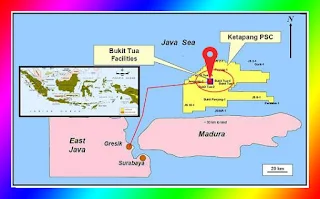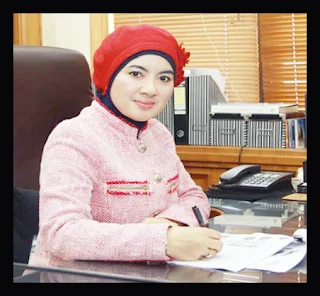Gas supply is certain to increase with the operation of a number of gas fields next few years. The government is planning to guarantee that there will be no problems with gas supply for domestic needs. Gas supply is getting stronger following the production of a number of gas fields in the next few years. As for the price, the price reduction option continues to be studied.
Dwi Soetiipto
Head of the Special Task Force for Upstream Oil and Gas Business Activities (SKK Migas) Dwi Soetiipto said, in 2026 and 2027 there were two gas projects that would produce in large quantities.
the Indonesia Deepwater Development (IDD)
The project is the Indonesia Deepwater Development (IDD) in the Makassar Strait and the Abadi Field of the Masela Block in the open sea of Maluku. IDD is targeted to produce 844 million standard cubic feet per day (MMSCFD) of natural gas, while Abadi Field produces 9.5 million tons of liquefied natural gas per year.
the Masela Block
"Completed overseas sales contracts can be transferred domestically. In addition, there are two upstream projects that will be producing in large quantities, namely IDD and Masela, which will increase supply, "Dwi said after a hearing with the Committee II of the Regional Representative Council, in Jakarta.
The government is also committed to expanding gas supplies for domestic needs. The share of gas for the country is 70 percent while the remaining 36 percent is for exports.
Arifin Tasrif
"Domestic gas demand continues to increase. In the next few years, the possibility for the interior to increase to 70 percent, "said Energy and Mineral Resources (ESDM) Minister Arifin Tasrif.
Throughout 2019, the realization of production is ready to sell (lifting) natural gas 5,934 MMSCFD or still below the state budget target of 7,000 MMSCFD. This year, the government is targeting 6,670 MMSCFD of gas lifting.
Regarding the government's plan to optimize domestic gas uptake, the Deputy Chairman of the Upstream and Petrochemical Industry Committee at the Indonesian Chamber of Commerce and Industry (Kadin) Achmad Widjaja said, if the government really wants to optimize gas, the diesel user industry must switch to gas. Because, 70 percent of the micro, small and medium businesses, small and medium industries to large industries in Java use diesel as the main fuel.
"Need special handling in order to switch to gas. What does the government want? That's the problem, "Achmad said.
The issue of infrastructure which is often used as a reason for hampering optimization of domestic gas, said Achmad, two regasification and floating storage (FSRU) vessels so far have been less than optimal to increase their role.
In addition, the cross-Java pipeline network is less connected to central Java. In addition, the pipeline network in Sumatra, which is mostly owned by SOEs, should be open access (use of shared gas pipes) so that gas prices are more affordable for consumers.
In the study, the Government is still examining various options regarding the reduction in gas prices. The price of gas for the industry is regulated through Presidential Regulation (Perpres) Number 40 of 2016 concerning Determination of Natural Gas Prices.
The regulation states that if gas prices cannot meet the economics of industrial users of natural gas and gas prices are higher than the US $ 6 per million British thermal units (MMBTU), the minister can set certain gas prices.
The stipulation is specifically for natural gas users in the fertilizer, petrochemical, oleochemical, steel, ceramic, glass, and rubber gloves industries. The options prepared by the government are reducing the country's share of upstream prices, requiring gas producers in Indonesia to meet the allocation policy for domestic needs, and freeing the private sector to import gas for industrial zones that are not yet connected to gas infrastructure.
IN INDONESIA
Pasokan Gas Dijamin Cukup
Suplai gas dipastikan bertambah seiring beroperasinya sejumlah lapangan gas beberapa tahun ko depan. Pemerintah mewacanakan menjamin tidak ada masalah pasokan gas untuk kebutuhan di dalam negeri. Pasokan gas semakin kuat menyusul berproduksinya sejumlah lapangan gas dalam beberapa tahun ke depan. Adapun soal harga, opsi penurunan harga terus dikaji.
Kepala Satuan Kerja Khusus Pelaksana Kegiatan Usaha Hulu Minyak dan Gas Bumi (SKK Migas) Dwi Soetiipto mengatakan, pada 2026 dan 2027 ada dua proyek gas yang akan berproduksi dalam jumlah besar.
Proyek itu adalah Indonesia Deepwater Development (IDD) di Selat Makassar dan Lapangan Abadi Blok Masela di laut lepas Maluku. IDD ditargetkan menghasilkan gas bumi 844 juta standar kaki kubik per hari (MMSCFD), sedangkan Lapangan Abadi menghasilkan gas alam cair 9,5 juta ton per tahun.
”Kontrak penjualan ke luar negeri yang selesai bisa dialihkan ke dalam negeri. Selain itu, ada dua proyek hulu yang bakal berproduksi dalam jumlah besar, yaitu IDD dan Masela, yang akan menambah pasokan,” kata Dwi seusai rapat dengar pendapat dengan Komite II Dewan Perwakilan Daerah, di Jakarta.
Pemerintah juga berkomitmen memperbesar pasokan gas untuk kebutuhan dalam negeri. Bagian gas untuk dalam negeri menjadi 70 persen sedangkan 36 persen sisanya untuk ekspor.
”Kebutuhan gas dalam negeri terus meningkat. Beberapa tahun mendatang kemungkinan bagian dalam negeri naik jadi 70 persen,” kata Menteri Energi dan Sumber Daya Mineral (ESDM) Arifin Tasrif.
Sepanjang 2019, realisasi produksi siap jual (lifting) gas bumi 5.934 MMSCFD atau masih di bawah target APBN yang 7.000 MMSCFD. Tahun ini, pemerintah menargetkan lifting gas 6.670 MMSCFD.
Terkait rencana pemerintah mengoptimalkan serapan gas di dalam negeri, Wakil Ketua Komite Industri Hulu dan Petrokimia pada Kamar Dagang dan Industri (Kadin) Indonesia Achmad Widjaja mengatakan, jika pemerintah benar ingin mengoptimalkan gas, industri pengguna solar harus beralih ke gas. Sebab, 70 persen sektor usaha mikro, kecil, dan menengah, industri kecil dan menengah sampai industri besar di Jawa memakai solar sebagai bahan bakar utama.
”Perlu penanganan khusus agar beralih ke gas. Apa pemerintah mau? Itu masalahnya,” kata Achmad.
Soal infrastruktur yang kerap dijadikan alasan terhambatnya optimalisasi gas dalam negeri, kata Achmad, dua unit kapal regasifikasi dan penyimpanan terapung (FSRU) selama ini kurang optimal untuk ditingkat kan perannya.
Selain itu, jaringan pipa lintas Jawa kurang terhubung di Jawa bagian tengah. Selain itu, jaringan pipa di Sumatera yang sebagian besar dimiliki BUMN seharusnya open access (penggunaan pipa gas bersama) agar harga gas makin terjangkau konsumen.
Dalam kajian Pemerintah masih mengkaji berbagai pilihan mengenai penurunan harga gas. Harga gas untuk industri diatur melalui Peraturan Presiden (Perpres) Nomor 40 Tahun 2016 tentang Penetapan Harga Gas Bumi.
Perpres itu menyebutkan, jika harga gas tidak dapat memenuhi keekonomian industri pengguna gas bumi dan harga gas Iebih tinggi dari 6 dollar AS per juta British thermal unit (MMBTU), menteri dapat menetapkan harga gas tertentu.
Penetapan itu khusus untuk pengguna gas bumi bidang industri pupuk, petrokimia, oleokimia, baja, keramik, kaca, dan sarung tangan karet. Opsi yang disiapkan pemerintah adalah mengurangi bagian negara pada harga di hulu, mewajibkan produsen gas di Indonesia memenuhi kebijakan alokasi untuk kebutuhan dalam negeri, dan membebaskan swasta mengimpor gas untuk kawasan industri yang belum tersambung dengan infrastruktur gas.
Kompas, Page-13, Wednesday, Feb 5, 2020


































